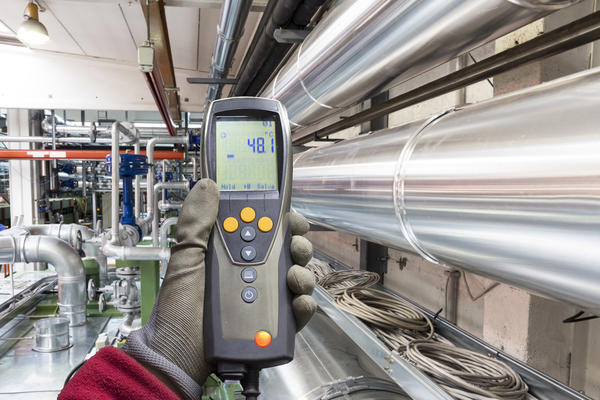Start asking for help to mitigate all-too-prevalent chemical hazards

Managing worker exposure to hazardous substances in the workplace needs attention. Safety professionals and regulators need to tune in and check the statistics. We are killing twice as many workers from occupational exposure to substances like asbestos, silica, benzene, formaldehyde and other chronic toxic substances than from acute trauma incidents. When it comes to carcinogens, there is no safe exposure. According to the 2018 Report on Work Injury and Fatality Rates in Canada, published by the University of Regina, in 2016 alone, 592 occupational disease fatalities were recorded compared to 312 injury related fatalities.
It seems in our effort to build safe systems of work, we have omitted a major risk factor — chemical exposure. How could this happen? It’s simple, really. There is poor recognition of chemical exposure hazards in the workplace and few safety professionals have the background or experience to properly assess occupational hygiene exposures. Even fewer employers have an occupational hygienist on staff. It is time for the safety community to sharpen its skills. All the incremental effort going into safety to assess hazards and control risk is missing a significant risk factor. We need to do better. We need to get better. We need to engage the occupational hygiene community and ask for help.
What is occupational hygiene? It is an art and science, and it involves assessment and control of exposures that may create acute and chronic health risk. Occupational hygienists that have reached the pinnacle of professional development and competency are certified by the Canadian Registration Board of Occupational Hygienists (CRBOH) as a Registered Occupational Hygienist (ROH). The United States has a similar scheme managed by the American Board of Industrial Hygiene (ABIH), certifying the most highly qualified in the field as a Certified Industrial Hygienist (CIH). But, there are fewer than 700 occupational hygienists in Canada who hold the ROH or CIH designation. Most employers in Canada have had to rely on their cadre of safety professionals — the Canadian Registered Safety Professionals (CRSPs) and others — to be watching out for these hazards that create chronic and often fatal health risks. The reality is the largest cohort of safety professionals in Canada has limited knowledge about occupational hygiene.
Why has this issue gone unnoticed? Acute trauma injury fatalities are prosecuted and acute trauma injuries result in increased workers’ compensation board premiums. Plus, they get press. Chronic exposure to disease-causing substances kill workers slowly and in a way that people hardly notice. Fatalities from occupational exposures largely go unrecorded as such and if they are, the costs are pooled and not attributable to an employer, and so the costs are not part of an employer’s experience rating. In these cases, nobody pays — we all pay. Take the example of a cohort of carpenters, pipe-fitters and labourers working in the petrochemical industry. When a few of them die of leukemia late in their careers or from benzene exposure in early retirement, it doesn’t make the news. In fact, the linkage between the workers’ exposures and early death may not even be recognized. Benzene is a proven human carcinogen and exposure continues undetected in many industries. And what about workers who die from asbestos exposure in the building trades or formaldehyde exposure in the health-care industry?
Another everyday example is the huge cohort of construction workers who breathe in silica dust from ordinary concrete drilling, breaking and crushing. A veteran construction worker in Kelowna, B.C., died in September of a disease caused by occasionally breathing in dust that contained silica during his 25-year career as a labourer.
It is time that we took notice and did something to correct this.
Audit the health and safety management system of any company and you’ll likely find that the largest majority of hazard assessments fail to recognize chemical exposure at all, never mind carcinogen exposure. If a hazard is not being recognized, then it will not be controlled and the occupational exposure to the toxic substances will continue. Occupational exposure to carcinogens and other serious chronic toxics is largely going undetected.
What can we do? Take time to develop your occupational hygiene skills so that you are better able to support the occupational hygienists with their work. Take an extra course or two on occupational hygiene, offered at more than 20 universities in Canada, many of them online. The University of Alberta offers a more advanced hands-on course in occupational hygiene. The University of New Brunswick is developing a specialty certificate focusing completely on occupational hygiene. The University of British Columbia, the University of Toronto and McGill University offer a master’s degree specializing in occupational hygiene.
You can also attend sessions on occupational hygiene at health and safety conferences.
What else can we do? For starters, we can start talking about the issue. Socialize the idea that chemical exposure at work is not okay. Employers need to take stock. Employers need to make an inventory of chemicals being used and other emissions workers may be exposed to. A quantitative assessment of exposures needs to be completed and this information can be used to build a control strategy. If occupational hygiene is not part of your experience or skill set, enlist the help of a ROH or CIH. The trend of fatalities due to occupational exposure to chemicals at work must stop. The safety community needs to take note and take charge.
This article originally appeared in the December/January 2019 issue of COS.






